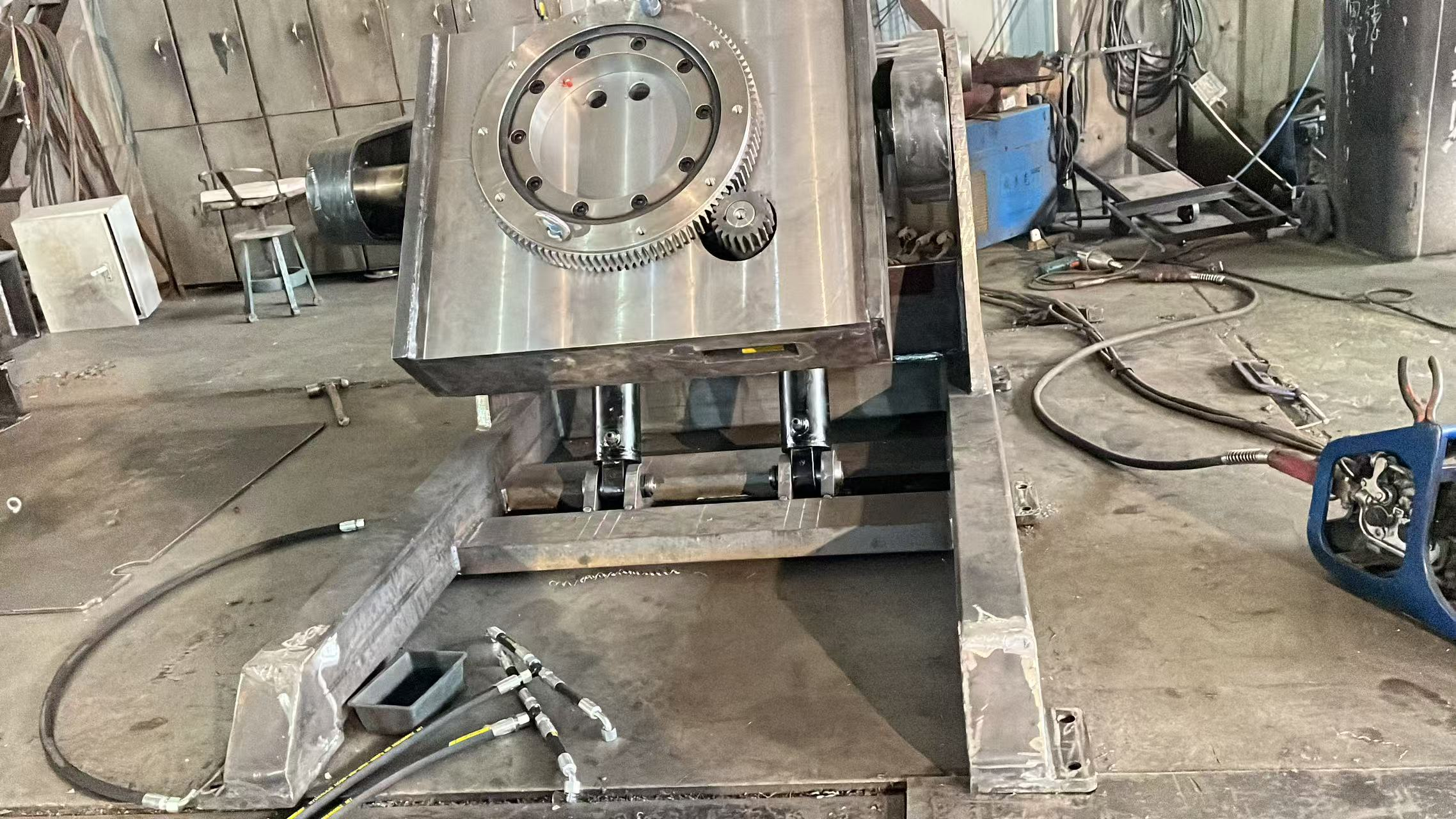In the offshore engineering and shipbuilding industries, the quality of each weld directly impacts the safe operation of assets worth tens of millions of dollars. Facing increasingly complex offshore operating environments and rising industry standards, posicionadores de soldadura de altura fixa are becoming crucial technological equipment for industry transformation and upgrading. These devices not only address precision challenges in traditional welding but also provide manufacturers with unprecedented quality control capabilities.
Core Technological Innovations in Offshore Equipment Manufacturing
The manufacturing of large offshore equipment such as platform jackets and floating production storage vessels requires welding operations to meet near-perfect precision standards. Heavy-duty positioner systems, through their unique rigid structure and stable work platform, provide reliable technical assurance for these heavyweight projects.
Performance Stability in Extreme Environments
Offshore operating environments place extremely demanding requirements on equipment. Professional marine-grade positioning equipment utilizes 316 stainless steel and multiple anti-corrosion treatments to effectively resist salt spray corrosion and marine atmospheric erosion. These devices feature IP65 protection等级, ensuring stable operation in humid, dusty environments while significantly extending service life.
The latest intelligent positioner control systems integrate environmental adaptation functions, automatically adjusting operating parameters based on temperature and humidity changes to maintain consistent welding quality under varying climatic conditions. This intelligent feature is particularly suitable for shipyards in climate-variable regions like Southeast Asia and the Middle East.

Revolutionary Efficiency Improvements in Shipbuilding
Modern shipbuilding demands new heights in welding precision and production efficiency. Shipbuilding positioner solutions significantly simplify operational processes through standardized working heights, improving welding operation efficiency by over 40%.
Precision Breakthroughs in Panel Welding
In hull panel welding, fixed-level welding systems ensure accurate positioning and stable support for large plates. According to practices at a major shipyard, using specialized positioning equipment reduced welding deformation by 35%, decreased rework by 60%, and shortened manufacturing cycles for single segments by four working days.
These devices are equipped with precision alignment technology that automatically detects workpiece position deviations and achieves sub-millimeter positioning accuracy through micro-adjustment systems. This precision level fully meets manufacturing requirements for high-end vessels like LNG carriers and luxury cruise ships.
Customized Solutions for Specialized Needs
Each offshore and shipbuilding project has unique technical requirements. Professional positioner equipment suppliers provide end-to-end custom marine solutions from design to installation, ensuring perfect adaptation to specific customer needs.
Adapting to Special Materials and Processes
For special materials commonly used in offshore equipment, such as high-strength steel and duplex stainless steel, specialized welding systems provide customized clamping devices and rotation speed control. For example, when welding X70 pipeline steel, the equipment precisely controls heat input to ensure weld performance meets design requirements.
One offshore project successfully completed welding of an 800-ton jacket using heavy-capacity positioning equipment, maintaining stable rotation accuracy throughout the process and achieving a weld pass rate of 99.97%.

Safety Performance and Reliability Assurance
In the highly safety-conscious offshore engineering sector, industrial-grade positioners ensure operational safety through multiple safety designs. Equipment includes overload protection systems, emergency braking devices, and anti-tipping mechanisms, providing comprehensive protection for large workpiece handling.
Intelligent Safety Monitoring
The latest smart safety monitoring systems continuously monitor equipment status, using vibration sensors, temperature detection, and load analysis to provide early warnings of potential failures. These systems seamlessly integrate with shipyards’ existing safety management platforms, enabling digital safety management.
Investment Return and Economic Analysis
While professional-grade marine welding positioners require significant investment, their comprehensive benefits are substantial. Here’s a typical ROI analysis:
| Metric | Traditional Method | Using Positioner | Improvement |
| Daily Welding Length | 120m | 200m | +67% |
| Rework Rate | 8% | 2% | -75% |
| Labor Cost | 100% | 70% | -30% |
| Equipment Utilization | 65% | 85% | +20% |
Based on actual case data, investment in a medium fixed-height positioner typically pays for itself within 14-18 months through efficiency gains and quality improvements.
Future Technology Trends
As digital shipbuilding advances, automated welding solutions are evolving toward intelligence and integration. New-generation positioning equipment will feature:
- Digital Twin Technology: Optimizing welding parameters through virtual simulation
- IoT Integration: Enabling real-time monitoring and predictive maintenance
- AI Optimization: Automatically adjusting welding parameters using machine learning
- Energy Management Systems: Reducing energy consumption and improving environmental performance
One leading shipyard has established smart welding workshops where 12 intelligent positioners operate synergistically through a central control system, enabling real-time production data collection and analysis, resulting in overall productivity improvements exceeding 35%.
Industry Certifications and Standards Compliance
Professional certified positioning equipment meets all major classification society requirements, including:
- American Bureau of Shipping (ABS) Welding Equipment Certification
- DNV Type Approval
- Lloyd’s Register (LR) Quality System Certification
- China Classification Society (CCS) Product Certification
These certifications ensure equipment meets stringent requirements for international offshore projects, providing technical assurance for manufacturers competing globally.
Conclusion
Fixed-height welding positioners have evolved into core equipment for modern offshore and shipbuilding manufacturing. By providing stable welding platforms, precise positioning control, and intelligent operating systems, these devices help manufacturers meet increasingly stringent quality requirements and tight delivery schedules. Selecting appropriate positioning equipment is not just a technical upgrade but a strategic decision to enhance enterprise competitiveness.
As offshore engineering moves toward deeper waters and larger scales, and shipbuilding transitions toward greener and smarter solutions, fixed-height positioners will continue to play an indispensable role, providing solid technical support for industry innovation and development.
